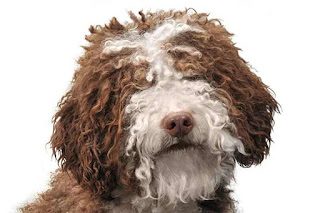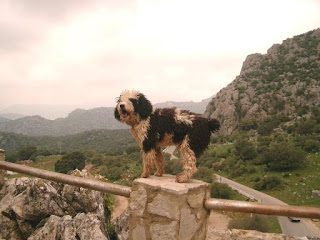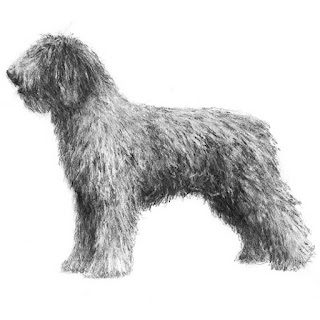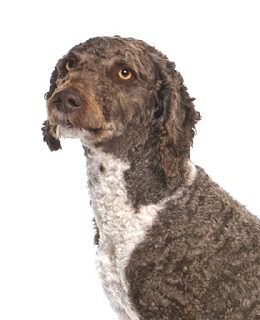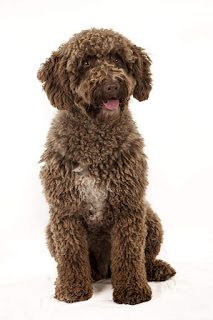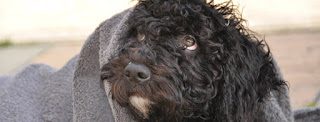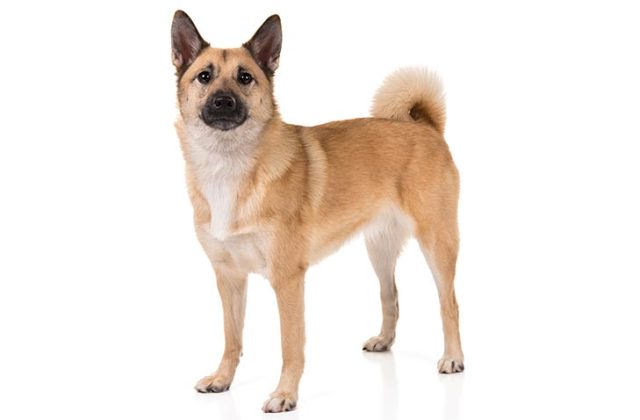AKC group: Herding
UKC group: Gun Dog
Average lifespan: 12 to 15 years
Average size: 30 to 50 pounds
Coat appearance: curly coat which is woolly in texture and may form cords when long
Coloration: solid black, beige, brown, or white; bicolour where the second colour is white; or particolour
Hypoallergenic: Yes
Best Suited For: Families with children, active singles, houses with yards, farms/rural areas
Little is known of the SWD’s origins. Some dog experts theorize that they descended from
African dogs or that they are related to other European water dogs, such as the
Portuguese Water Dog, or to Turkish or Hungarian herding and flock-guarding breeds.
Dogs of this type were hard-working aides on Spanish farms, at mines and in fishing villages, where they filled many roles, including herding, retrieving, rat patrol and protection. The breed’s curly single coat is thought to be an adaptation to the various climates found on the Iberian Peninsula, which range from dry to humid.
With mechanization and the migration of people to cities from rural areas, the dogs were less needed for their traditional work, but people interested in the breed made efforts to preserve it, starting in 1975 by collecting a variety of the dogs from various areas, selectively breeding them to maintain their appearance and working ability, and turning their talents toward new jobs such as search and rescue and drug and bomb detection.
Today, the SWD is recognized by European and American registries. The American Kennel Club classifies it as a herding dog and granted it full recognition in January 2015, paving the way for the SWD’s participation in conformation showing and other AKC events.
Temperament
The Spanish Water Dog boasts having a tremendous sense of smell, sight and sound. As such they are true working dogs that enjoy nothing more than being out and about in the great outdoors.
They are intelligent and sensitive by nature being just at ease in a home environment as they are working in the field. They form strong bonds with their owners and families and are known to be even-tempered dogs which is just one of the reasons they make such great family pets.
They are also known to have a very enthusiastic personality which sees these dogs being ultra-willing and eager to please. However, puppies have to be well socialised from a young enough age for them to mature into well-rounded, obedient adult dogs. They are a great choice for families where the children are slightly older and who therefore know how to behave around dogs. Spanish Water Dogs tend to be a little aloof and wary of people they don’t already know, but rarely would one of these dogs ever show any sort of aggressive behaviour towards a stranger, preferring to keep their distance until they get to know someone.
They are not the best choice for first time owners because a Spanish Water Dog needs to be handled and trained by someone who is familiar with this type of sporting dog and their specific needs. However, in the right hands, these striking dogs can be trained to be obedient dogs with particular attention being paid to the “recall” command. They are never happier than when they know their place in the pack and who they can look to for direction and guidance. They also need to know what an owner expects of them which in short, means their training has to be consistent and always fair right from the start and then throughout a dog’s life.
As their name suggests, SWDs love being in water and are naturally strong swimmers which means care has to be taken when walking them anywhere near more dangerous water courses just in case they decide to jump in.
Health Problems
While the SWD seems
to be a very healthy breed there are some issues that it has, just like all other breeds. There are cases of hip dysplasia in the breed, so choose your breeder carefully. All breeding dogs should have their hips tested, either by OFA or PennHIP. There have been a few cases of PRA reported in Europe so it is advised that all breeders should test their breeding stock for PRA and other such genetic eye diseases with a yearly CERF exam.
A responsible breeder will be able to produce the results in writing. Like other Water Dogs and related breeds, they grow hair in their ear canals and can be prone to ear infections. The ears must be kept dry and clean. Because these dogs are (as a general rule) so active and energetic as puppies, they may seriously injure themselves from too much running and jumping when their skeletal structure is still developing.
Living Conditions
The Spanish Water Dog can adapt to almost all environments or circumstances, as long as it gets enough exercise. These hardy dogs can endure both extreme heat and cold with no problem.
Trainability
The Spanish Water Dog is an
intelligent character, but they do have a bit of a “wandering off” streak in them which is why it’s so important to teach these dogs a strong “recall” command from a very young age. With this said, socialising them from a young enough age is extra important and their training also has to start too. It’s best to teach a SWD the basics when they are still puppies and to start their training in earnest as soon as they have been fully vaccinated and slightly older.
Being sensitive dogs by nature, a Spanish Water Dog does not respond well to any sort of harsh correction or heavy handed training methods. The key to successfully training them is to use positive reinforcement and to make a training session as interesting as possible. It’s best to keep things nice and short without too much repetition which helps keep a Spanish Water Dog more focussed on what is being asked of them which as a result achieves the best results.
Exercise Requirements
Because the Spanish Water Dog is a herding breed it has fairly high requirements for exercise. These dogs require at least 30 minutes of moderate exercise per day plus some active play time, if possible. Training these dogs for herding or other dog sports is a great way to meet both their physical and mental stimulation needs.
Grooming
The Spanish Water Dog has a single coat, meaning there’s little or no undercoat. He doesn’t shed heavily, although he does lose hairs, just as people do. The single, curly coat often leads people to believe that the SWD is hypoallergenic, but all dogs produce allergens to some extent in their dander, saliva and urine. If you have allergies, you should spend time with several Spanish Water Dogs to determine whether you react to them.
Grooming the Spanish Water Dog is easy.
Typically, the coat is clipped once or twice a year to approximately 1 inch over the entire body, including the head and ears. Between clips, there’s no need to comb, brush or blow-dry the coat, all of which can damage the texture and shape of the curls.
When your Spanish Water Dog gets dirty, bathe him with a mild, pet-safe shampoo. Work it through the coat gently, as if you were hand-washing a cashmere sweater. Rinse thoroughly with lukewarm water, then use your hands to squeeze out excess water. Blot the coat with a towel, being careful not to rub the coat roughly. Let your dog air-dry in a warm spot with no drafts.
The rest is basic care. Trim the nails every week or two, and brush his teeth often — with a vet-approved pet toothpaste — for good overall health and fresh breath.
Children and Other Pets
Spanish Water Dogs make great family pets in households where the children are older and who therefore know how to behave around dogs. With this said, any interaction between younger children or toddlers and an SWD should always be well supervised by an adult to make sure things stay nice and calm.
If they have grown up with a family cat in the house, they usually get on well together, however, a Spanish Water Dog would not hesitate in chasing any other cats they don’t know. Care has to be taken when they are around any other smaller animals and pet, just in case.
Is the Spanish Water Dog the Right Breed for you?
High Maintenance: Grooming should be performed often to keep the dog’s coat in good shape. No trimming or stripping needed.
Minimal Shedding: Recommended for owners who do not want to deal with hair in their cars and homes.
Easy Training: The Spanish Water Dog is known to listen to commands and obey its owner. Expect fewer repetitions when training this breed.
Very Active: It will need daily exercise to maintain its shape. Committed and active owners will enjoy performing fitness activities with this breed.
Did You Know?
The Spanish Water Dog also goes by other names. In Spain, he’s known as Perro de Agua Español (Spanish water dog), Perro Rizado (curly coated dog), Turco Andaluz (Andalusian Turkish dog) and Barbeta.
